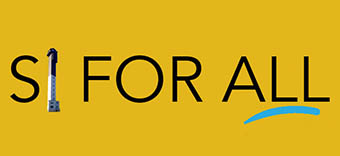
Why We Must Stop the Chop!
Why we must STOP THE CHOP!
In October, 2020, Town Council voted 4-3 to enter a binding Settlement Agreement in the Bluestein v Sullivan’s Island lawsuit. CLICK HERE to see the history of the accreted land lawsuit.
After it became clear that the Town would be unlikely to secure permits from DHEC and Army Corp, Sullivan’s Island Town Council developed a New Settlement Agreement, approved 4-2 on March 16, 2021, and voted to send the Work Plan, incorporating the terms of the New Settlement, to DHEC and Army Corp for their review.
This New Settlement mandates the removal or severe cutting of thousands of trees, shrubs and vegetation, between Station 16 and 28.5, including cutting the majority of myrtles to 3’, and allows any plant to be cut – without height restriction – so long as an arborist opines it won’t likely kill it. It leaves the island dangerously vulnerable to the #1 threat: hurricane storm surge. It also introduces the use of poisonous herbicides to paint tree stumps to prevent regrowth, in an area covered by wetlands, and damages a sensitive wildlife habitat and nature preserve.
Climate change is accelerating and we are being made more vulnerable from its effects. Natural spaces for the public to enjoy and that provide critical wildlife habitat are rapidly disappearing. The trees and wetlands in our Accreted Land and Maritime Forest provide hurricane storm surge protection and are amazing (and free) storm water pumps. Leaving this land in its natural state makes us safer and more resilient. Why would we get rid of our trees, when we need them now more than ever?
- The FATE of Our PUBLIC LAND TRUST now rests in the hands of Two Families. Sullivan’s Island Town Council has handed over the keys to two Plaintiff families and their heirs to manage land they do not own for their own benefit, regardless of the impact to public safety, public health, resiliency, wildlife, or the environment. Any changes inconsistent with the Settlement will require agreement by the plaintiffs – even if it is necessary to respond to changing conditions as a result of climate change, natural disasters, anything.
- OUR PUBLIC SAFETY & RESILIENCE is at risk by removing our Hurricane Storm Surge protection.
The “Vegetative Wall” (height, density, coverage and type of vegetation) between the beach and homes protects us from our #1 Threat: Hurricane storm surge. The shrubs and trees dissipate the wave energy and limit the distance damaging storm surge penetrates inland.
- OUR PUBLIC HEALTH is at risk by removing trees that absorb standing water and introducing poisonous herbicide on tree stumps to prevent regrowth.
- More standing water increases the threat from mosquito-borne illness & flooding.
- Poison in an area filled with wetlands and a rising water table is never a good idea. Our children play in the woods. This is a fragile wildlife habitat and food source. The poison may be absorbed into our groundwater, run off into our storm water collection pipes and get dumped into the marshes, which support fishing and recreation.
- ALL OF US will pay FOREVER to benefit a FEW. This settlement is expensive.
- Migrating birds and other wildlife will suffer by removing critical habitat.
Forests and wetlands have involved into highly efficient pumps.
Forests return 7 out of every 10 inches of rain to the atmosphere.
A mature tree can soak up 40,000 gallons a year. They pump water through their roots, allowing more water from the ground to seep in and drain faster. Then they release this moisture in their canopies like misting humidifiers, cooling everything around them.
We are obligated to implement and maintain the vegetation in the state described in the settlement. It will require hand labor and tools near or in wetlands, which are extensive. Taxpayers pay for the 100’ Transition Zone, AND to hire engineers and arborists, oversee permitting and work in the entire 150-acre settlement area.
It removes our storm surge protection, making our private properties more vulnerable to damage in hurricanes, risks an increase in FEMA rates and more storm water runoff. We’re paying to make ourselves less safe and less resilient.
6. Natural Spaces are rapidly disappearing. The Maritime Forest is a place of untamed beauty and serenity – one of the few remaining maritime forests on the East Coast. It was put into a public land trust so that our children and our grandchildren would have a place to discover and absorb the wonder of Mother Nature.


